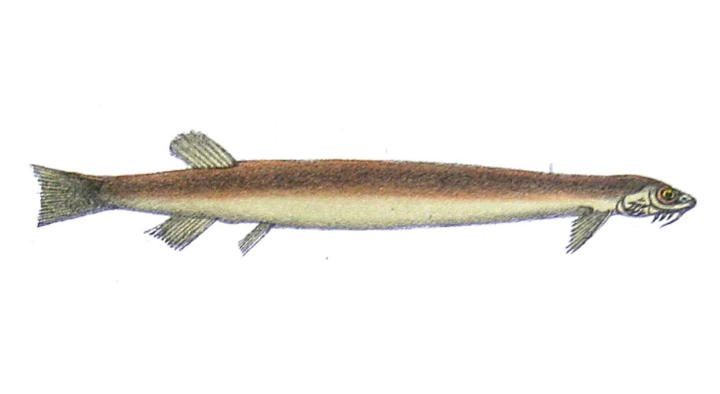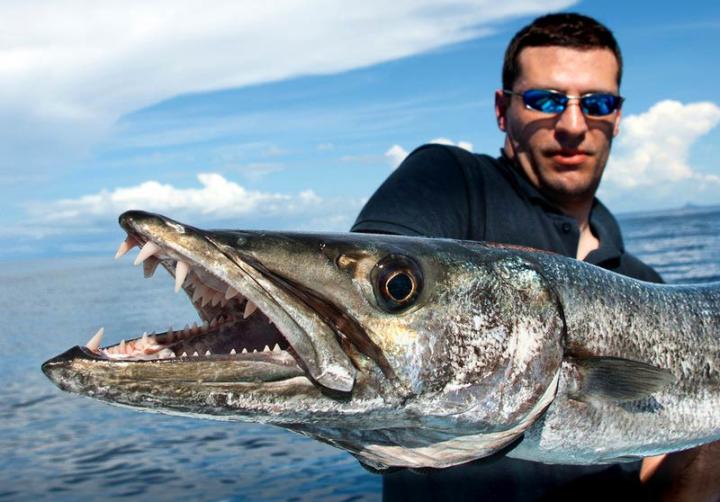Imagine the situation – you are taking an evening dip in the Amazon River (for some unknown reason?!). Suddenly you feel it. A strange wiggling sensation inside the “old chap” followed by an excruciatingly intense pain. What has just happened is you have been the victim of a candiru attack. Also known as the toothpick or vampire fish, this little river monster has swum up your penis and lodged itself in position using its umbrella like spines.
If you are to believe the stories then your only course of action is to immediately amputate the penis to prevent the candiru from working its way into your body cavity resulting in your certain death. At least this is the advice of George Albert Boulenger, Curator of Fishes at the British Museum during the early 20th century. Other suggested cures are somewhat less drastic, but all agree, the candiru is one of the terrors of the Amazon basin fit to rival both the piranha or anaconda.
What is the Candiru?
The candiru (Vandellia cirrhosa) is a tiny catfish measuring just 3 to 5 cm in length. It is also known as the toothpick fish on account of its slender shape.
This little fish’s unsavoury reputation stems from its vampire-like feeding habits. The candiru is a parasite of larger fish, feeding off the blood from their gills. Living in the murky waters of the Amazon river it was said that the candiru relies on its sense of smell to home in its victim. However, it is now believed they hunt by sight. It will then stealthily swim alongside its victim waiting for the moment the larger fish opens its gills to breathe, at which point it darts in. Using its umbrella like opercular spines on its head, the candiru fixes itself in position to feast on blood from the vessel-rich lining of the gills.
Candiru attacks on humans
Tales of candirus attacking people were first recorded in the scientific literature nearly 200 years ago. These were all second hand accounts related by local tribes-people to visiting explorer / scientist types.
The first reports were in the 1820s when it was noted that men from some tribes would tie string around their penis when going in the river. Other tribes used more extensive protective measures, although this could equally have been to prevent the nethers being nibbled by piranhas.
A later expedition reported something far more shocking. In one tribe was a man and several boys had had their penises amputated. The doctor recording this made the assumption that these were the result of attacks by candiru. However, this may have been a guess as the doctor did not speak the native language and it is also possible the wounds resulted from piranha attacks.
Many of these early records relied on tales from tribes people or potentially dubious translations. One of the only first hand reports of a candiru entering a person does not actually involve a man at all, it was a woman and the fish had allegedly swum up her vagina. This was in 1891 and the candiru was successfully removed. Other similar cases were noted in a 1930s review, however, not one single documented case existed of a candiru swimming up someone’s penis.

It was always suspected that these tiny catfish would track their fish prey by detecting ammonia in the water. This was often cited as the likely reason candirus when mistakenly end up in human’s toilet parts. Unfortunately for this theory a study carried out in 2001 showed absolutely no interest in potential chemical attractants – however, when presented with a tasty looking goldfish they responded enthusiastically.
Combined with the fact that swimming up a tiny orifice would almost certainly be a death sentence for the little fish it would seem slightly puzzling why it might behave in such a way.
So, has a Candiru ever swum up a penis?
By this point the candiru / penis legend is beginning to sound a little like an urban myth. Despite being widely cited in both scientific and travel literature there seems to be absolutely no concrete evidence of this behaviour. This is strange considering the number of people living along the Amazon and the interest in this particular natural abomination.
But wait. Just as we are ready to consign the candiru to the animal myths bin we find there has been a documented case. Not only that, it occurred in 1997 and comes complete with video and a preserved specimen.
The story goes that 23 year old Silvio Barbosa was happily urinating into the Amazon River at Itacoatiara when he was attacked by a candiru. He describes how the fish swam straight up the stream of urine and entered his penis. Although he tried to grab the fish’s tail as it entered it slipped away into his urethra. Barbosa was treated by urologist Dr Anoar Samad in a 2 hour operation to remove the candiru which he filmed.
Despite the victim’s account and allegedly reputable doctors report an investigation by Dr Stephen Spotte, an American marine biologist appears to call bullshit on the episode, and big time!
The first, and most dubious aspect of this story is the victim’s account of the candiru swimming up the flowing stream of urine. This is beyond far-fetched and for all intents and purposes impossible – the laws of fluid dynamics do not allow it. It is however one of the most enduring myths of the candiru’s behaviour.
There is also the matter that the reported measurements of the specimen make it a little bit of a tight squeeze to say the least.

Anyway, let us just suppose that a candiru did in fact swim up this man’s penis. There are plenty of inconsistencies in the doctor’s report of the incident too. Firstly Dr Samad claims the fish had eaten its way through the urethra and into the patient’s scrotum. From what experts know of the candiru they do not possess powerful enough jaws to do this.
The other major flaws in Dr Samad’s story relate to the specimen itself. Apparently this has its spines intact, whilst he claims in the operation he had to cut them. This would make sense as it would be physically impossible to pull a fish of this size backwards, out of the urethra, with its spines in place.
Whatever the truth of the story it lead Dr Spotte to conclude that being attacked by a candiru was about as likely as “being struck by lightning whilst simultaneously being eaten by a shark”.
So does it?
The legend of the candiru, and its penchant for swimming up unfortunate swimmer’s penises is a classic. So much so that it is given as fact in many reputable sources. But at the end of the day it just doesn’t stand up without any cast iron evidence. All we have are a few historical anecdotes and one very dubious recent case.
One would imagine that given the number of people entering the Amazon every day and the candiru’s wide distribution there would have been at least a few confirmed cases over the years. As it stands there haven’t. I doubt this revelation will do much to dispel the legend of the vampire genital invading fish but those are the facts.
Maybe we should feel a little relieved that the threat of candiru attack is at the very worst negligible but I kind of liked the story of the fish once named Urinophilus diabolicus (the devilish urine‐lover).




PURE BUNKUM
Still not gonna risk it. Even if there’s a miniscule chance, it’s not worth it to lose my schlong just to pee or swim.
This does beg a question. If there is any truth to the story, why is there nothing on it attacking women? Wouldn’t it seem likely that it would have easier entry there? Not to be crude about it, but it attacking only males doesn’t make much sense.
Why would you think it would be easier to penetrate the urethra of a woman? The diameter of the urethra is the same size in a woman or a man!
The only difference being the urethra length, so the speed of access to the female bladder by the candiru would be faster than in a man.
he meant it would go up the vag, which is larger, but still plenty full of easy to access blood.